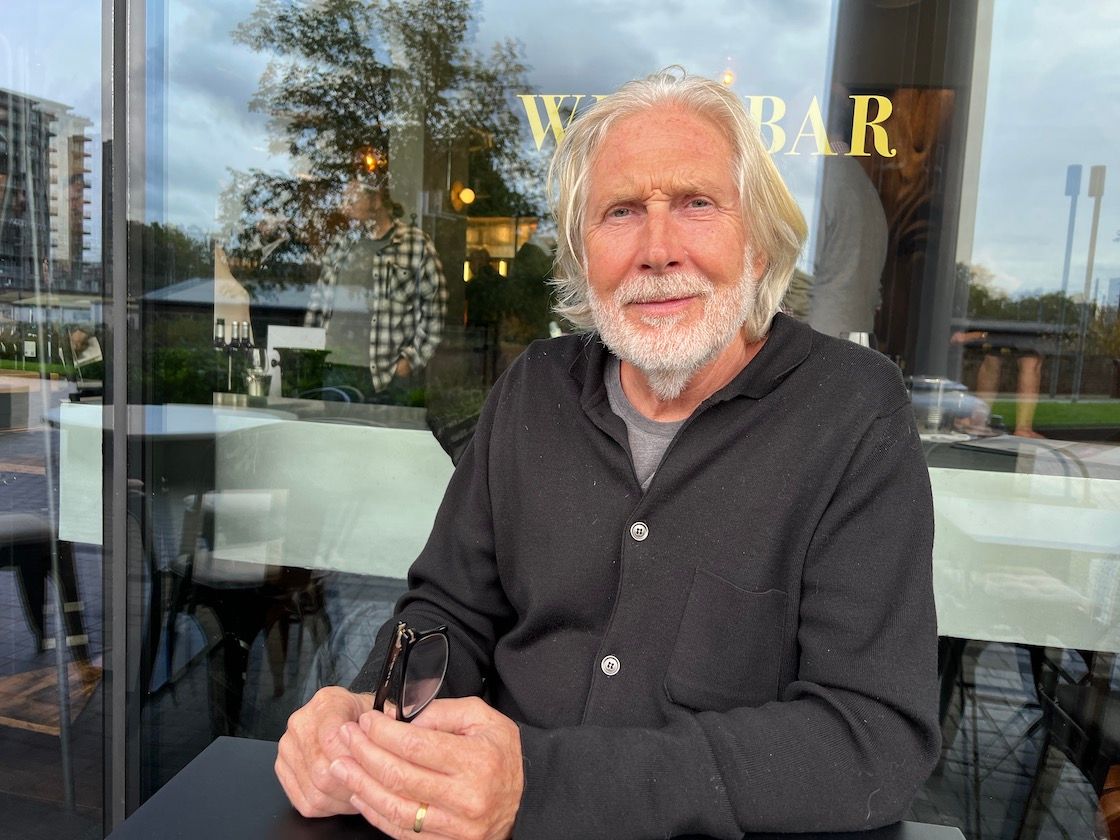“The Roussillon is almost like the New World in the Old World, I see more similarities in the Roussillon and South Africa than I do elsewhere – it’s got that kind of old vine feel, with feisty individuals who want to do something different,” says Daniel.
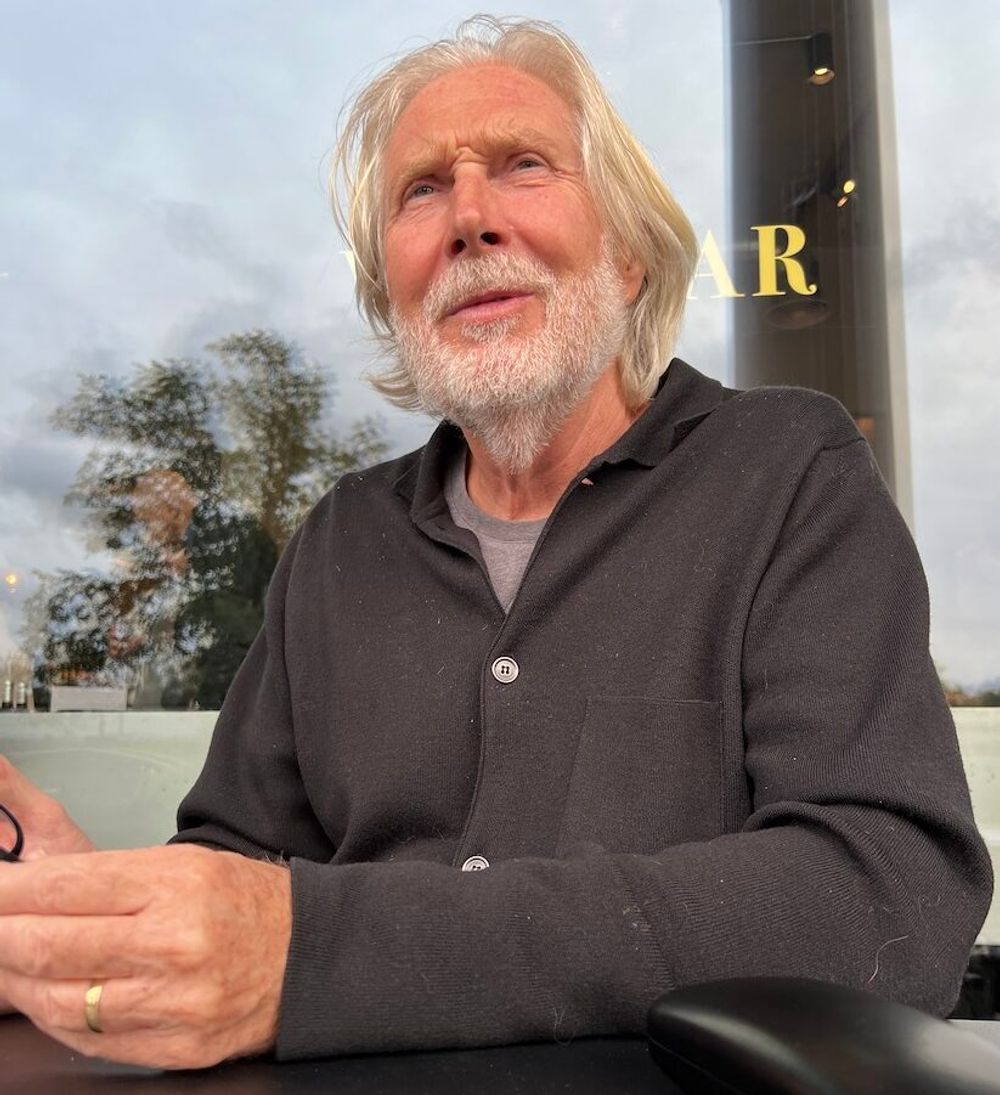
Man with a mission: Steve Daniel, HN Wine’s head of buying, London, October 2023
The current rejuvenation of Greek wine in the UK owes a lot to one man – Steve Daniel, head of buying for Hallgarten & Novum Wines (HN Wines). During his 16 year stint as buying and marketing director for Oddbins and in the 20 years since, Daniel has made it one of his key missions, to restore Greek wine to its rightful place as one of the world’s top producers of fine wine.
His next project is the Roussillon, the untamed corner of France’s wild South West where he has found an exciting mix of long-established producers and newbies seeking to impress with new-found investment and an array of winemaking techniques, well suited to craft fine wine from an area rich in low-yielding old vines.
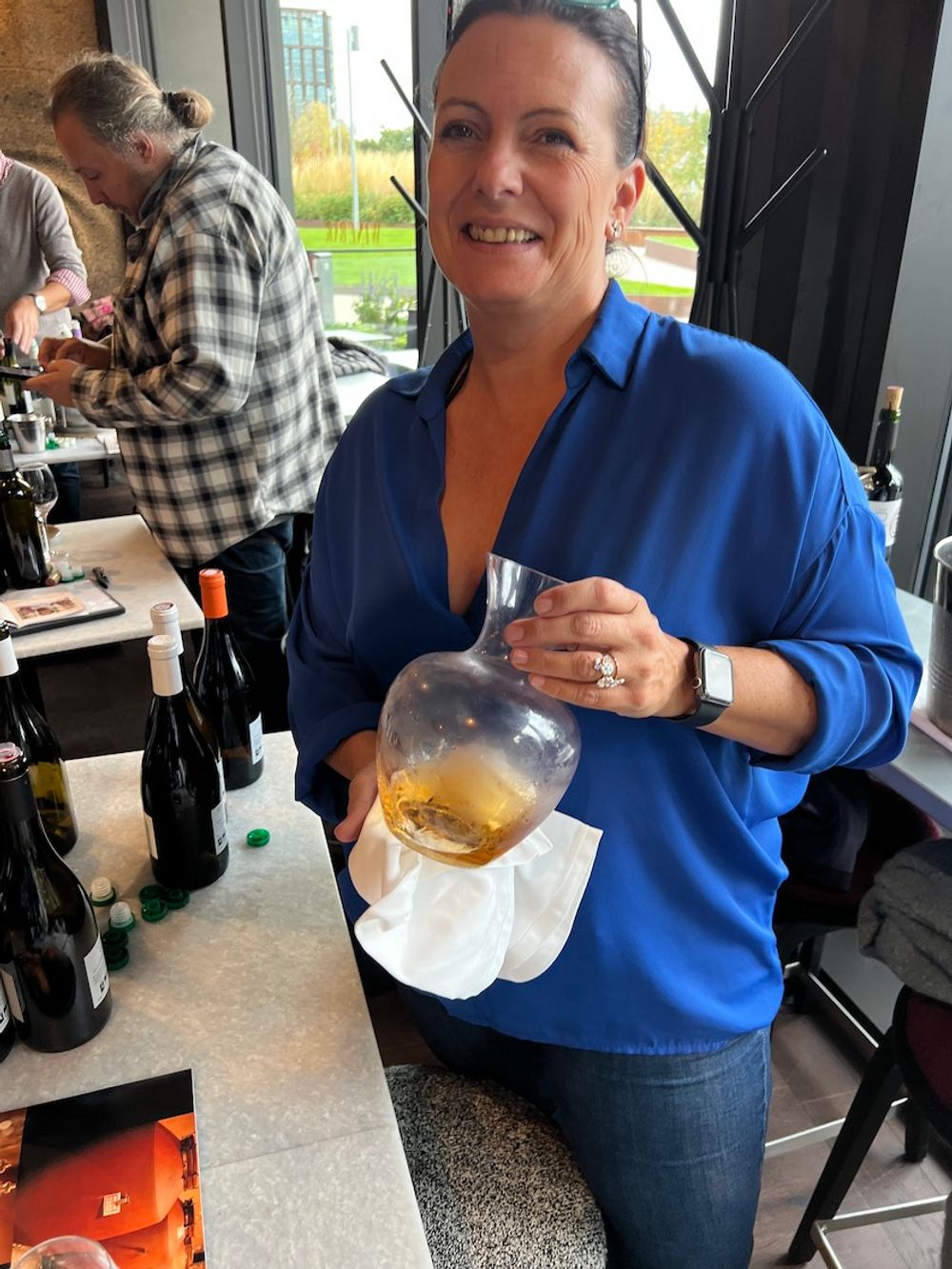
Bordeaux-trained Severine Bourrier, Chateau de L’Ou: fully-organic, 30 amphora, what’s not to like
Old vines low yields
“Roussillon to me is super exciting, almost the last frontier in many ways of France, it’s undiscovered still – even though it’s been there in people’s consciousness as an appendage, if you like to Languedoc, it’s never been fully discovered,” says Daniel, outside the London leg of HN’s Roussillon Roadshow, a three-date tour of the UK.
“I think they’ve also re-discovered it themselves,” he adds, “rather than looking at it as an area of mass production – they’ve realised it’s impossible to have mass production in an area like the Roussillon where it’s old vines, low yields, dry farming, it’s just not geared up for it so the people making wine down there are working with their terroir and producing some truly exceptional wines.”
Roussillon is not a new wine region, so has there been a noticeable change in the winemaking since Daniel has been buying wine?
“Back in the day when I was at Oddbins in 1987 I was buying wine from the Roussillon but it was right at the very beginning and it was always ‘Please don’t make the wine like that’ or ‘Can you not have brettanomyces in your wine?’ ‘Can you not do this and can you not do that?’ and it was always a remedial action. The guys that got it … their fruit was amazing.”
“There’s always been pioneers down there like Gauby, of course, but now there’s a whole heap of people investing in the area because if you want to set up a winery from scratch it’s the cheapest vineyard area in France. It’s not the cheapest place to produce wine – you can buy a hectare of vineyards very cheap – but they are old vine, low yield and dry farmed so what these people have seen is that this is an area with potential for fine wines and that’s what excites me – they are producing fine wines in an undiscovered area that is undervalued and therefore offering real value.”
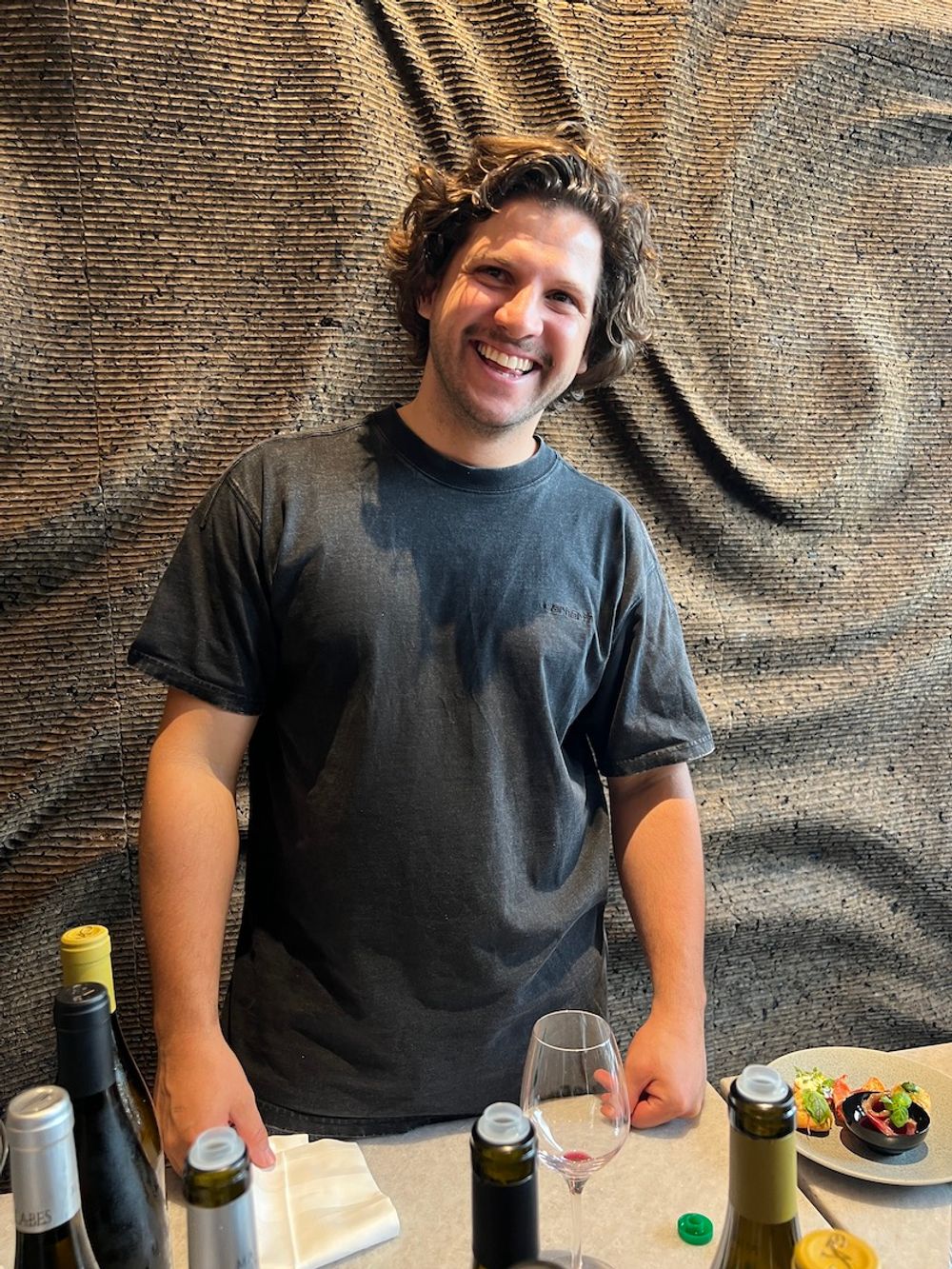
Victor from Domaine Gardiés: a rising star making terroir-driven, expressive wines of great elegance
Roussillon without the Languedoc
A hurdle that needs to be overcome, Daniel believes, is the historical ‘lumping together’ of the Languedoc and Roussillon, especially when it comes to expectations over wine style and price. So how to overcome that?
“Let’s stop calling it Languedoc-Roussillon for a start, they’re not the same. The Languedoc is a massive producer that makes some fabulous fine wines and lots of… vin ordinaire if you like. Roussillon is tiny in comparison it’s like 1 per cent of the output of France as opposed to the Languedoc which is many, many more times than that.”
“So it is a different beast. If you’re lucky enough to go to the region you will see immediately that it’s a very different area. The Languedoc generally speaking (and this is a massive generalisation) is more about rolling hillsides and is more typically Mediterranean but the Roussillon is wild landscape it’s sauvage, mountains and crags in a very small area surrounded on three sides by mountains and on the other by the Med.”
“You can also go very short distances and have different soil types – you can go from limestone to schist to clay to whatever… whatever you want you’ve got it there, you just need to know where to look and, because it’s not over-developed, there are places you can plant vineyard and there are abandoned vineyards you can find and rejuvenate, so the opportunity is enormous.”
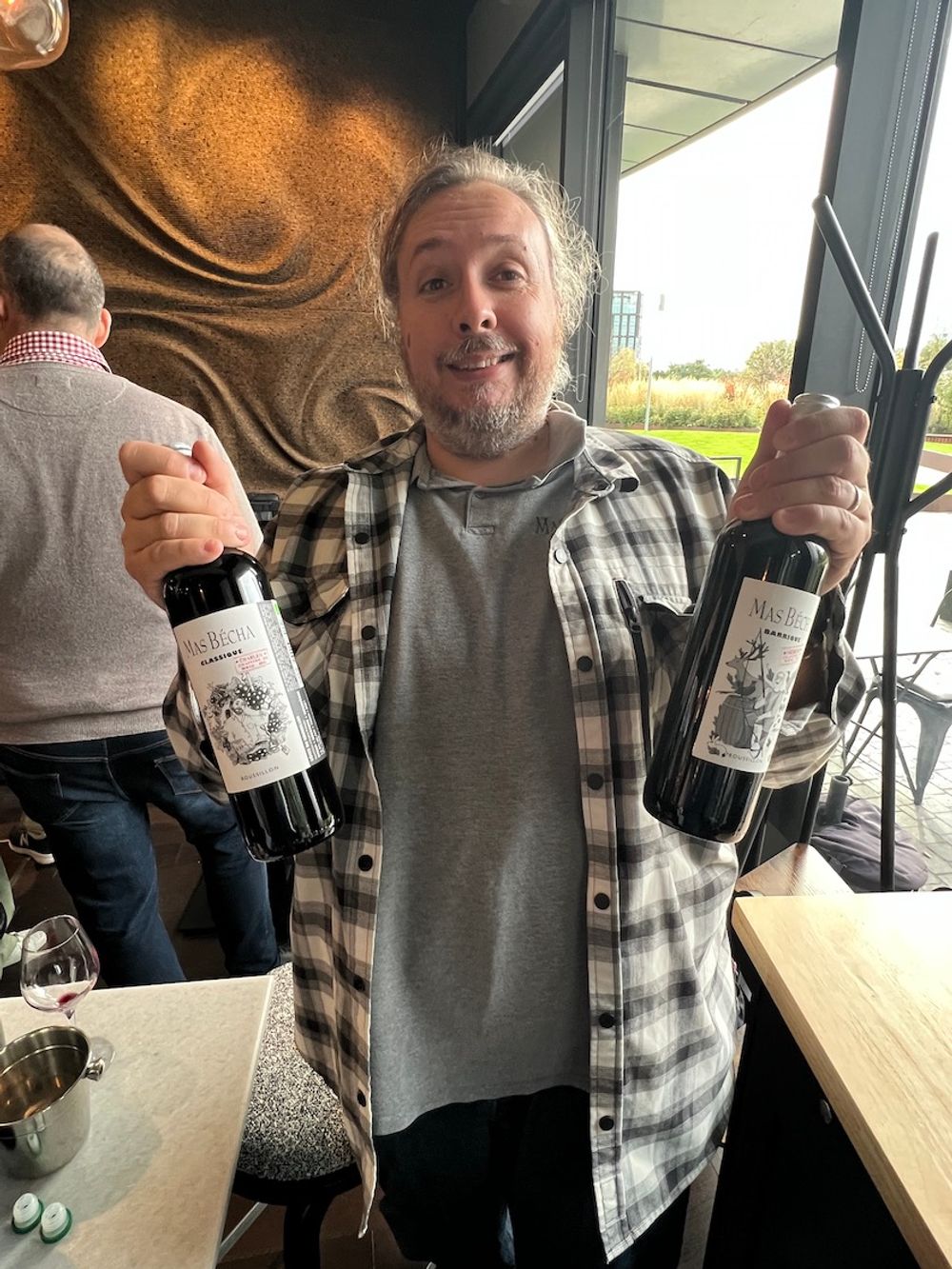
Charles Perez from Mas Bécha: two classic Côte de Roussillon blends with a modern twist
Individual wine styles
Daniel believes that the size of producer, grape varieties and semi-arid climate all point towards making modern, crafted fine wines.
“It’s not an easy route for these guys – they can’t necessarily make mass market wines so the co-ops we work with Dom Brial can get down to a price that’s interesting – it won’t be bargain basement prices you can get from the Languedoc but you can get real value there in the co-ops – but then again Roussillon is not dominanted by co-ops it’s dominated by smaller producers.”
“Grape types are all of the classic, soon to be trendy, grapes like Grenache which is going to be the next big grape as far as I can see, it’s malleable, you can make wines that are silky, sexy and far more quaffable than most Burgundian Pinot Noir at the moment. You’ve obviously got Syrah, Mourvèdre especially on the coast, and then in the whites you’ve got the amazing Grenache Blanc, Grenache Gris so there’s a bit of everything down there and there’s also a few interlopers – Roussanne you’ll see now, Viognier although not much, but it’s generally classic French Mediterranean vineyard and French Mediterranean varieties.”
The summer of 2023 was one of the driest ever with the region now having been officially declared a semi-arid area of France. Is the changing climate here of worry for Daniel?
“If I was looking at it as a source of bulk wine I’d be very worried but if it’s a source of really individual fine wine at sensible prices I’d be less worried – these are vineyards that have never been irrigated and some years it’s going to be more a struggle than others and I think Yeah the potential is there but not as a bulk wine producing area.”

Dom Brial’s Xavier Ponset: a co-op with many firsts to its name
New frontier
So is this a new departure for HN Wines and what sort of timeframe has been set?
“Absolutely it’s a new development – I like a long-term project – I was happy to devote 25 years of my life to get Greece to work, with the Roussillon I see it as a five-year project – starting kind of now. I’ll keep pushing to say ‘look if you want a fine wine producing area of France that you don’t normally associate with fine wine the Roussillon is where it’s at.’
“It will give you better value than a lot of the Northern Rhône and some of the whites are disarmingly fresh and mineral so, if you like Chablis, for instance, well-made Grenache Gris or Grenache Blanc will more than fit that bill. Incidentally, Chablis to me doesn’t taste like Chablis used to – maybe the people that think Chablis doesn’t taste as minerally as they’d like will see Roussillon as a source of really fine white wines.”

Elise Gaillard moved from the Rhône to found Domaine Madeloc in 2002, majoring in Grenache-dominant blends
“So I think it has something for everyone, it’s almost like the New World in the Old World – it’s a rediscovery – I see more similarities in the Roussillon and South Africa than I do elsewhere it’s got that kind of old vine feel, with feisty individuals who want to do something different.”
So how has the reception to the new Roussillon wines been to date?
“To be honest? Kind of mixed. It’s a bit like back in the day with Greece… ‘Would you like to try a wine from the Roussillon?’ Answer ‘No’ Show them a wine from Roussillon, let them taste it ‘Wow! That’s amazing’ So it’s going to be one of these jobs – no-one’s asking for Roussillon but that doesn’t mean it’s not relevant and it’s not my job to present it, because it really is a valid proposition.”
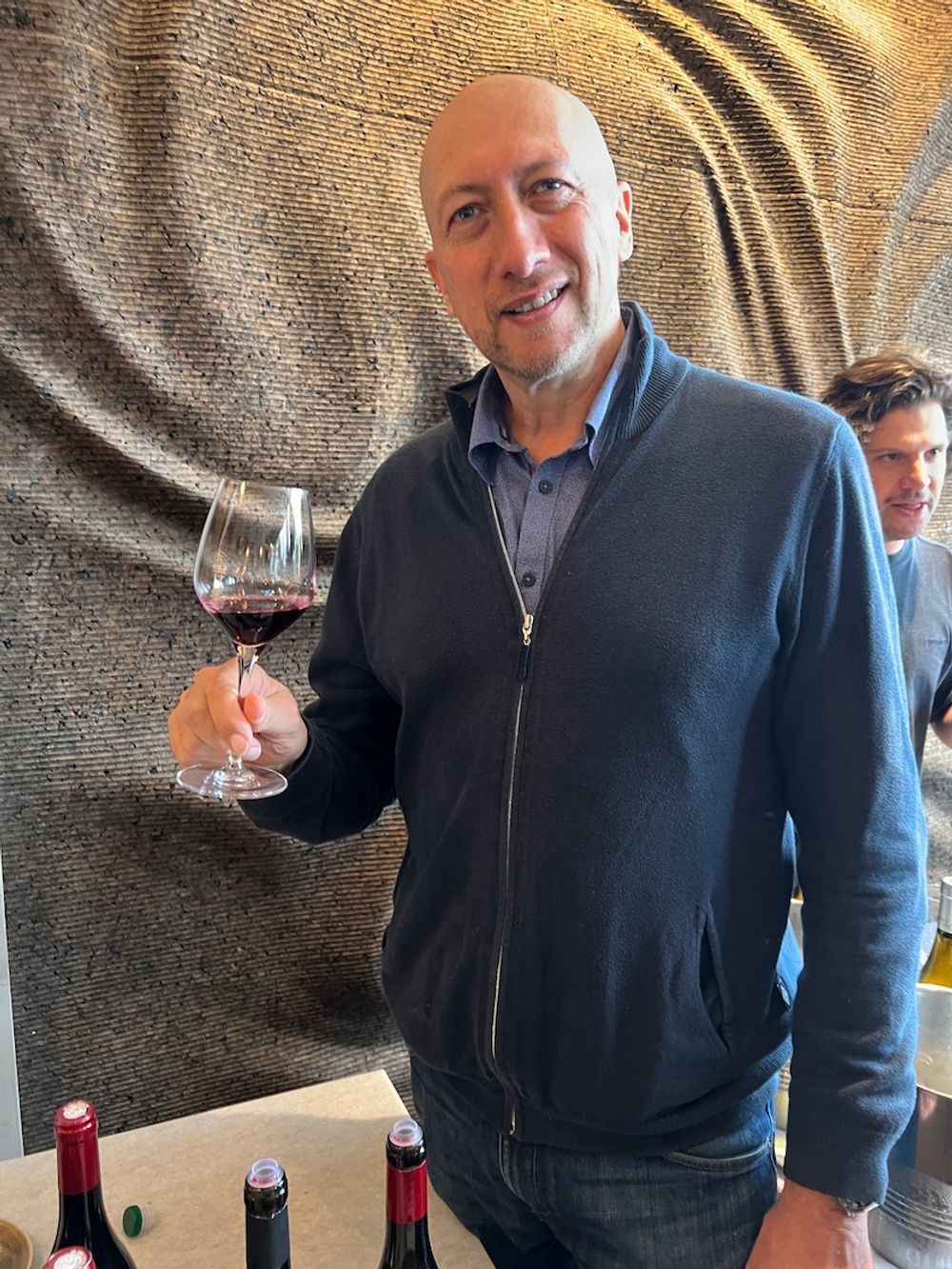
Bruno Cazes from Mas de Lavail; making dry reds in the heart of Maury
To taste the wines from HN Wine’s new Roussillon producers visit the annual portfolio tasting taking place on Monday and Tuesday 19th/ 20th February at Lindley Hall, London.
Hallgarten and Novum Wines is a commercial partner of The Buyer. To discover more about them click here.
